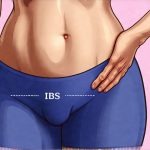Living with an overactive bowel – whether manifesting as Irritable Bowel Syndrome (IBS), Inflammatory Bowel Disease (IBD) flare-ups, or simply frequent digestive upset – can significantly impact quality of life. Many individuals find themselves constantly anticipating urgent bathroom trips, experiencing bloating, cramping, and overall discomfort. While various treatment options exist, dietary adjustments often represent the first line of defense and a powerful tool for symptom management. However, conventional wisdom surrounding fiber intake isn’t always helpful in these situations; in fact, increasing fiber can exacerbate symptoms for some people. This article delves into the concept of low-fiber meal structures designed to help calm an overactive bowel, offering practical guidance and insights into building a more comfortable digestive experience.
It’s crucial to understand that “low-fiber” doesn’t equate to “unhealthy” or lacking in nutrients. It’s about strategically reducing specific types of fiber – particularly insoluble fiber – known to stimulate bowel activity. The goal isn’t necessarily complete elimination but rather a careful selection of foods and meal construction techniques aimed at minimizing gut irritation. This approach often involves focusing on easily digestible options, smaller portion sizes, and methods for slowing down digestion. The specifics will vary greatly from person to person, making individualized experimentation and potentially working with a registered dietitian essential for optimal results. This is about finding what works for you and your unique digestive system.
Understanding the Role of Fiber in Bowel Activity
Fiber’s impact on bowel function is complex and multifaceted. Generally, fiber adds bulk to stool and helps it move through the digestive tract. However, there are two main types: soluble and insoluble. Insoluble fiber, found abundantly in whole grains, bran, and many vegetables, doesn’t dissolve in water. It speeds up digestion and can increase bowel movements – which is great for constipation but problematic for overactive bowels. Soluble fiber, present in oats, beans, and some fruits, dissolves in water to form a gel-like substance, slowing down digestion and helping regulate blood sugar levels. For individuals with sensitive digestive systems, reducing insoluble fiber intake while potentially maintaining moderate amounts of soluble fiber is often key. Understanding the nuances between these fibers can help you tailor your diet for optimal comfort.
The effect of fiber isn’t just about bulk; it also influences the gut microbiome. While fiber feeds beneficial bacteria, in an already inflamed or hyperactive system, rapid fermentation of fiber can produce gas and bloating, worsening symptoms. This is why a gradual approach to dietary changes is recommended – allowing your gut flora time to adjust. Furthermore, certain fibers can trigger visceral hypersensitivity, meaning they heighten the perception of pain or discomfort in the digestive tract. Identifying trigger foods through careful elimination diets (under professional guidance) can be incredibly helpful. This process often benefits from keeping a detailed food diary, as highlighted in this guide on effective meal tracking.
It’s important to remember that fiber isn’t inherently bad; it’s about finding the right balance and type for your individual needs. Many people with overactive bowels find significant relief by focusing on low-fiber options, but this isn’t a one-size-fits-all solution.
Building Low-Fiber Meals: Practical Strategies
Constructing low-fiber meals requires more than just eliminating high-fiber foods; it’s about considering how you combine and prepare them. Smaller, more frequent meals are often preferable to large portions, as they put less stress on the digestive system. Chewing food thoroughly is also paramount – breaking down food mechanically aids digestion and reduces the workload for your intestines. Focusing on well-cooked foods rather than raw options can further ease digestion, as cooking softens fibers and makes nutrients more accessible.
Meal composition should prioritize easily digestible proteins like lean poultry, fish, or tofu. Carbohydrates should primarily come from low-fiber sources such as white rice, potatoes (peeled), or gluten-free bread. Fats should be included in moderation, opting for healthy fats like olive oil or avocado oil. Avoid combining large amounts of fat and fiber simultaneously, as this can further slow digestion and increase discomfort. For instance, a high-fiber salad with a fatty dressing is likely to cause issues.
Finally, hydration plays a crucial role. Drinking adequate water helps soften stools and supports overall digestive function. However, avoid drinking large volumes of water during meals, as this can dilute digestive enzymes. Instead, sip water throughout the day, between meals.
Identifying Trigger Foods & Food Diary Keeping
A cornerstone of managing an overactive bowel is identifying your individual trigger foods. What causes discomfort for one person may not affect another. The most effective way to pinpoint these triggers is through a carefully managed elimination diet – ideally guided by a registered dietitian or healthcare professional. This involves removing suspected problem foods from your diet for a period, then systematically reintroducing them one at a time while monitoring symptoms.
- Start with a baseline: Remove common trigger foods like high-fiber vegetables (broccoli, cauliflower), legumes (beans, lentils), whole grains, and potentially dairy or gluten if you suspect intolerance.
- Reintroduce slowly: Introduce one food every 2-3 days in small quantities. Keep a detailed food diary noting what you ate, when, and any associated symptoms. Be specific – record the severity of bloating, cramping, gas, or changes in bowel habits.
- Observe carefully: Pay attention to delayed reactions; sometimes symptoms don’t appear immediately after eating.
The process can be time-consuming but incredibly valuable. A food diary isn’t just about identifying what causes problems; it also helps you understand your body’s responses and build confidence in your dietary choices. Don’t attempt a strict elimination diet without professional guidance, as it can lead to nutrient deficiencies or exacerbate underlying conditions.
The Role of Cooking Methods & Food Preparation
How you prepare your food significantly impacts its digestibility. Raw vegetables, even low-fiber ones, can be harder for sensitive systems to process than cooked versions. Steaming, boiling, and baking are generally gentler on the gut than frying, which adds fat and can slow digestion. Peeling fruits and vegetables removes a significant portion of their fiber content.
Consider these preparation tips:
1. Choose white rice over brown rice; it’s lower in insoluble fiber.
2. Opt for peeled potatoes instead of skin-on versions.
3. Puree or blend vegetables to reduce their texture and make them easier to digest.
4. Avoid heavily spiced foods, as spices can sometimes irritate the digestive tract.
Beyond cooking methods, consider portion sizes. Even low-fiber foods can cause issues if consumed in large quantities. Eating smaller, more frequent meals puts less stress on your system and allows for better digestion. Focus on mindful eating, savoring each bite and avoiding distractions to promote proper chewing and absorption of nutrients.
Understanding FODMAPs & Their Impact
FODMAPs (Fermentable Oligosaccharides, Disaccharides, Monosaccharides And Polyols) are short-chain carbohydrates that can be poorly absorbed in the small intestine. When they reach the large intestine, they’re fermented by bacteria, producing gas and potentially triggering symptoms in individuals with IBS or other digestive sensitivities. While not directly related to fiber content, FODMAPs often overlap with high-fiber foods and can contribute to bowel discomfort.
- Common high-FODMAP foods include: onions, garlic, apples, pears, wheat, dairy products (lactose), and certain sweeteners (honey, high-fructose corn syrup).
- A low-FODMAP diet involves temporarily restricting these foods and then gradually reintroducing them to identify individual sensitivities.
- This is another dietary approach best undertaken with the guidance of a registered dietitian, as strict elimination can be restrictive and potentially lead to nutrient deficiencies.
Reducing FODMAPs alongside reducing fiber can often provide synergistic relief for individuals with overactive bowels. It’s about understanding how different food components interact within your digestive system and tailoring your diet accordingly. For a more comprehensive approach to dietary adjustments, exploring anti-inflammatory meal planning can be beneficial.
It is vital to remember that this information is for general knowledge and informational purposes only, and does not constitute medical advice. It is essential to consult with a qualified healthcare professional for any health concerns or before making any decisions related to your health or treatment.





















